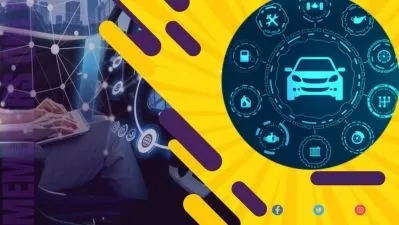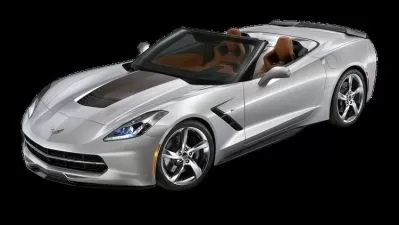Automotive Ethernet
47:44
Description
Introduction to Automotive Ethernet
What You'll Learn?
- What is automotive ethernet and differences between automotive ethernet and "regular" ethernet
- How is automotive ethernet standing related to other automotive protocols LIN, CAN, CAN FD, Flexrey, MOST
- What does term V2X, V2V, V2I means and usage of them
- What is ADAS and usage of ADAS in real life
- Levels of automation in driving
- Prerequests for autonomous driving
- Why we need automotive ethernet
- Characteristics of automotive ethernet
- Properties of automotive ethernet
- What challenges does automotive ethernet introduce in cybersecurity, car security, automotive security
Who is this for?
What You Need to Know?
More details
DescriptionThis course provides a comprehensive overview of Automotive Ethernet, its role in modern vehicle architecture, and why it's increasingly vital in the automotive industry. We will start by explaining what Automotive Ethernet is and why it is becoming the backbone of vehicle networking, especially as vehicles evolve towards higher levels of automation. With the increasing demand for higher data rates, seamless connectivity, and real-time communication in vehicles, traditional protocols like CAN, CAN FD, LIN, FlexRay, and MOST are often insufficient in handling the requirements of advanced applications.
Through detailed comparisons, you'll explore the pros and cons of Automotive Ethernet versus these protocols in terms of bandwidth, latency, reliability, cost, and scalability. While protocols like CAN and LIN have been industry standards for decades, they struggle to meet the demands of autonomous driving and the increasing complexity of modern vehicle systems. In contrast, Automotive Ethernet delivers the speed, flexibility, and efficiency needed to enable these cutting-edge applications.
In addition to discussing the technical advantages, we will delve into different levels of automated driving, from driver assistance systems to fully autonomous vehicles, and how Automotive Ethernet plays a pivotal role in facilitating these developments. The course will also explain the crucial role of ADAS (Advanced Driver Assistance Systems) in modern vehicles and provide real-life applications that highlight its significance, such as adaptive cruise control, lane-keeping assistance, and emergency braking.
Moreover, we will cover important terms like V2X (Vehicle-to-Everything), V2V (Vehicle-to-Vehicle), V2I (Vehicle-to-Infrastructure), and V2P (Vehicle-to-Pedestrian) and explore how these technologies are shaping the future of connected vehicles. These systems are crucial for improving traffic safety, efficiency, and autonomy.
Finally, we'll address the cybersecurity implications of integrating Automotive Ethernet. As vehicle connectivity increases, so does the potential attack surface. You will learn about the challenges and strategies for securing in-vehicle networks in the context of modern cybersecurity threats.
This course is designed to provide you with a deep understanding of Automotive Ethernet and its impact on vehicle architecture, communication, automation, and security, preparing you for the future of automotive technology.
Who this course is for:
- AUTOSAR experts
- AUTOSAR enthusiasts
- Automotive experts
- Automotive enthusiasts
- Autonomous driving enthusiasts
- Autonomous driving experts
- Automotive communication experts
- Automotive communication enthusiasts
- Automotive security experts
- Automotive security enthusiasts
- Car security experts
- car security enthusiasts
This course provides a comprehensive overview of Automotive Ethernet, its role in modern vehicle architecture, and why it's increasingly vital in the automotive industry. We will start by explaining what Automotive Ethernet is and why it is becoming the backbone of vehicle networking, especially as vehicles evolve towards higher levels of automation. With the increasing demand for higher data rates, seamless connectivity, and real-time communication in vehicles, traditional protocols like CAN, CAN FD, LIN, FlexRay, and MOST are often insufficient in handling the requirements of advanced applications.
Through detailed comparisons, you'll explore the pros and cons of Automotive Ethernet versus these protocols in terms of bandwidth, latency, reliability, cost, and scalability. While protocols like CAN and LIN have been industry standards for decades, they struggle to meet the demands of autonomous driving and the increasing complexity of modern vehicle systems. In contrast, Automotive Ethernet delivers the speed, flexibility, and efficiency needed to enable these cutting-edge applications.
In addition to discussing the technical advantages, we will delve into different levels of automated driving, from driver assistance systems to fully autonomous vehicles, and how Automotive Ethernet plays a pivotal role in facilitating these developments. The course will also explain the crucial role of ADAS (Advanced Driver Assistance Systems) in modern vehicles and provide real-life applications that highlight its significance, such as adaptive cruise control, lane-keeping assistance, and emergency braking.
Moreover, we will cover important terms like V2X (Vehicle-to-Everything), V2V (Vehicle-to-Vehicle), V2I (Vehicle-to-Infrastructure), and V2P (Vehicle-to-Pedestrian) and explore how these technologies are shaping the future of connected vehicles. These systems are crucial for improving traffic safety, efficiency, and autonomy.
Finally, we'll address the cybersecurity implications of integrating Automotive Ethernet. As vehicle connectivity increases, so does the potential attack surface. You will learn about the challenges and strategies for securing in-vehicle networks in the context of modern cybersecurity threats.
This course is designed to provide you with a deep understanding of Automotive Ethernet and its impact on vehicle architecture, communication, automation, and security, preparing you for the future of automotive technology.
Who this course is for:
- AUTOSAR experts
- AUTOSAR enthusiasts
- Automotive experts
- Automotive enthusiasts
- Autonomous driving enthusiasts
- Autonomous driving experts
- Automotive communication experts
- Automotive communication enthusiasts
- Automotive security experts
- Automotive security enthusiasts
- Car security experts
- car security enthusiasts
User Reviews
Rating

Udemy
View courses Udemy- language english
- Training sessions 33
- duration 47:44
- Release Date 2024/11/21








